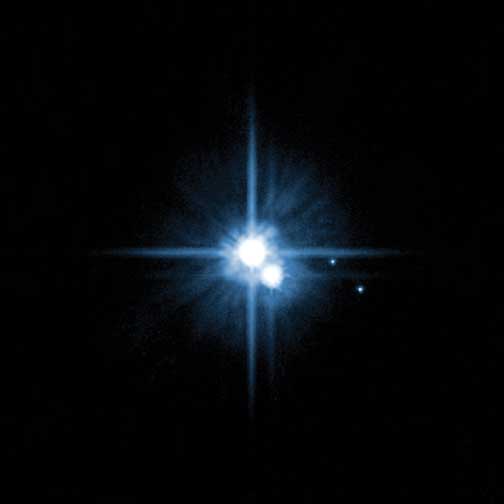Let’s save Pluto and rescue planetary science from endless ridicule.

NASA / ESA / Hal Weaver / Alan Stern, et al.
In his 1929 painting The Treachery of Images, Belgian surrealist René Magritte wrote, “This is not a pipe” beneath what is obviously a pipe. What at first appears as nonsense becomes, on reflection, a thoughtful statement about the differences between words, human concepts, and actual things.
In 2006 the International Astronomical Union (IAU) declared, “A dwarf planet is not a planet.” This unintentional surrealism intensified a dispute about planetary definition and the status of poor little Pluto.
Passions were unleashed among astronomers and the public. Flame wars erupted. Leno joked and pundits pontificated. As a planetary scientist and educator, I’ve been amazed, amused, and annoyed by this dust up. I’ve had to reassure kids that Pluto itself is okay. I’ve tried to explain that there’s actually a wonderful truth beneath the foolishness: revolutionary discoveries about planets around other stars and the variety of objects orbiting our Sun.
The hastily written IAU resolution seemed to define planets as objects that orbit only the Sun. Hello! Worse still, it said an object can only be a planet if it has cleared all small objects out of its neighborhood — something impossible to determine for planets around other stars. It also seemed to imply that the same object could be considered a planet in one location, but not if you moved it farther from its star.
Many planetary scientists rushed to criticize the decision. Others, eager to put the whole thing to rest, urged acceptance of the IAU’s coup. This devolved into a wrestling match between those who favor the dynamical criterion the IAU used (a planet must be big enough to gravitationally kick out any smaller bodies that come near it) or physical criteria (a planet must be big enough to gravitationally pull itself into a round shape).
Some mainstream media, comfortable quoting scientific “authorities,” assumed the “official” IAU process was the final word. But the IAU has no such authority. They name objects and surface features. Should they redefine categories and words, especially those with widespread cultural and historical resonance? If the IAU adopts a clearly flawed definition, nobody is under any obligation to accept it.
But I’m getting sick of this. Do planetary scientists really want to be known as the community that can’t stop fighting about what a planet is, during a decade when we are actually finding more planets every year than in all of human history, and launching spacecraft to solve mysteries of planetary climate, landscapes, and habitability?
It’s time for a compromise definition of “planet” that includes both the physical and the dynamical perspectives: A planet is a round object orbiting a star. If we learn that it has not gravitationally dominated its surroundings, then it goes in a sub-class called dwarfs. Dwarf planets join terrestrial planets such as Earth and jovian planets such as Jupiter or Gliese 581b as full-fledged citizens of their planetary systems, with all the rights and privileges thus implied.
The entire point of definitions is clear communication, but we don’t need one that is perfect, we just need one that isn’t clearly failing our common senses. The universe is a delightfully messy place and much as we like to tidy it up with our concepts and categories, it will continue to surprise us. So let’s accept this definition, reveling in the fact that new discoveries will surely render it obsolete. Let’s embrace a certain amount of ambiguity, contradiction, and awareness — that would satisfy Magritte — of the limits of words and categories.
Exceptions should not trouble us unduly. Moons are moons because they orbit planets, even though some resemble other planets more than they resemble other moons. Some asteroids are actually planets, if they are big enough to be round and orbit a star. Why not? Mostly, let’s accept that dwarf planets are planets. Fix this, tidy up the sloppy definition, and let’s be done with it.
This article originally appeared in print in the March 2009 issue of Sky & Telescope. Subscribe to Sky & Telescope.
 0
0
Comments
You must be logged in to post a comment.